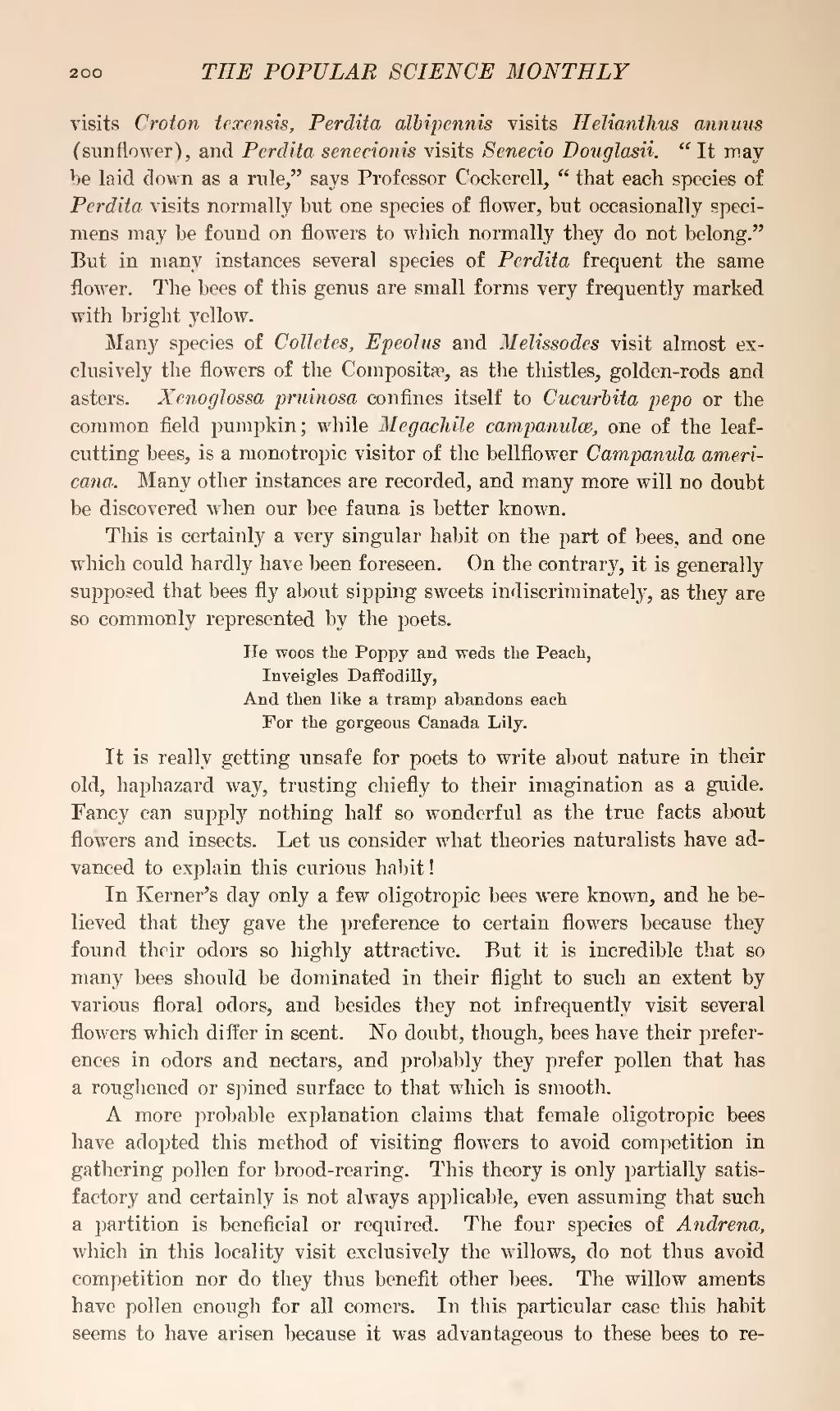visits Croton texensis, Perdita albipennis visits Heliantlius annuus (sunflower), and Perdita senecionis visits Senecio Douglasii. "It may be laid down as a rule," says Professor Cockerell, "that each species of Perdita visits normally but one species of flower, but occasionally specimens may be found on flowers to which normally they do not belong." But in many instances several species of Perdita frequent the same flower. The bees of this genus are small forms very frequently marked with bright yellow.
Many species of Colletes, Epeolus and Melissodes visit almost exclusively the flowers of the Compositæ, as the thistles, golden-rods and asters. Xenoglossa pruinosa confines itself to Cucurbita pepo or the common field pumpkin; while Megachile campanulæ, one of the leaf-cutting bees, is a monotropic visitor of the bellflower Campanula americana. Many other instances are recorded, and many more will no doubt be discovered when our bee fauna is better known.
This is certainly a very singular habit on the part of bees, and one which could hardly have been foreseen. On the contrary, it is generally supposed that bees fly about sipping sweets indiscriminately, as they are so commonly represented by the poets.
He woos the Poppy and weds the Peach,
Inveigles Daffodilly,
And then like a tramp abandons each
For the gorgeous Canada Lily.
It is really getting unsafe for poets to write about nature in their old, haphazard way, trusting chiefly to their imagination as a guide. Fancy can supply nothing half so wonderful as the true facts about flowers and insects. Let us consider what theories naturalists have advanced to explain this curious habit!
In Kerner's day only a few oligotropic bees were known, and he believed that they gave the preference to certain flowers because they found their odors so highly attractive. But it is incredible that so many bees should be dominated in their flight to such an extent by various floral odors, and besides they not infrequently visit several flowers which differ in scent. No doubt, though, bees have their preferences in odors and nectars, and probably they prefer pollen that has a roughened or spined surface to that which is smooth.
A more probable explanation claims that female oligotropic bees have adopted this method of visiting flowers to avoid competition in gathering pollen for brood-rearing. This theory is only partially satisfactory and certainly is not always applicable, even assuming that such a partition is beneficial or required. The four species of Andrena, which in this locality visit exclusively the willows, do not thus avoid competition nor do they thus benefit other bees. The willow aments have pollen enough for all comers. In this particular case this habit seems to have arisen because it was advantageous to these bees to re-
